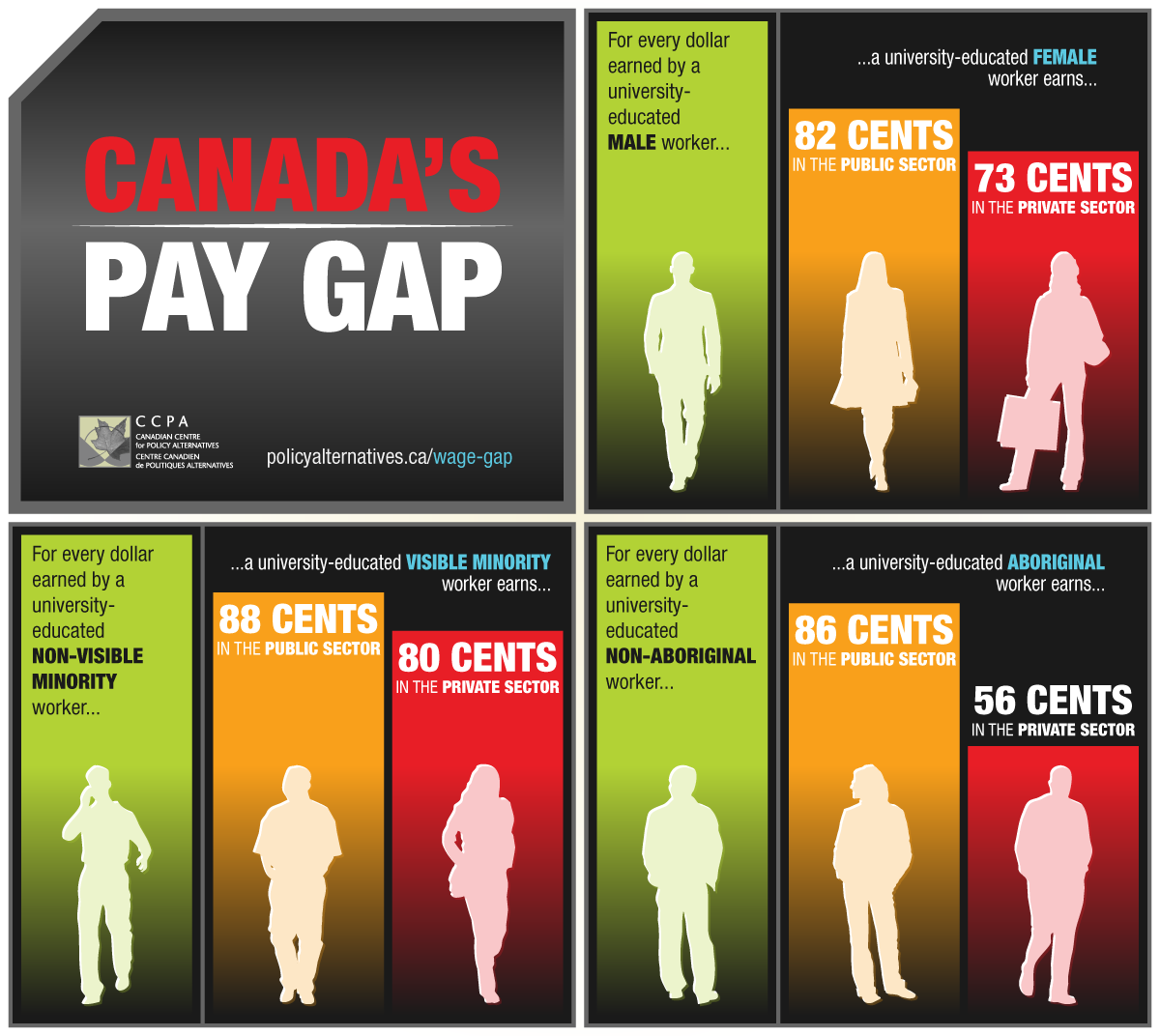The Fraser Institute is really concerned that public sector employees might be making more than private sector employees. What is notable about the recent Fraser Institute report on public and private sector wages in British Columbia is that it does not seem particularly concerned with the reasons why there are variations in public and private sector compensation. The stated concern of the report is that public sector wages, benefits and job security should be more closely tied to private sector wages, benefits and job security.
An analysis of public and private wages based on National Household Survey data finds that wages are higher in the public sector precisely for those groups of people who experience the greatest discrimination in the private sector—because the public sector goes further in correcting those discriminatory practices. Salaries are lower in the public sector for the groups least likely to experience discrimination on the basis of race and sex.
 For example, a university educated, non-Aboriginal man will earn 8.4% more in the private sector (with an average annual salary of just under $90,000– compared to the $83,000 he would earn in the public sector). His university educated Aboriginal male colleague will earn 52.1% less in the private sector, or just over $32,000 annually (compared to $67,000 in the public sector).
For example, a university educated, non-Aboriginal man will earn 8.4% more in the private sector (with an average annual salary of just under $90,000– compared to the $83,000 he would earn in the public sector). His university educated Aboriginal male colleague will earn 52.1% less in the private sector, or just over $32,000 annually (compared to $67,000 in the public sector).
If public sector compensation was made to reflect the private sector, public sector employers would need to lower the wages of women, Aboriginal workers, and visible minority workers and raise the wages of the highest paid employees. Workers who had accepted a public sector wage penalty because the public sector offered non-wage compensations such as better pensions, would see those benefits shrink or disappear altogether (so much for rewarding rational self interest). Job security in the public sector would rise and fall as the private sector reacted to market volatility and economic shocks (oil prices fall, nurses get laid off).
Governments would also have to spend more money on compensation for the workers at the top end of the scale. A whole lot more. For example, the highest paid public sector workers see their salaries top out at just under half a million dollars annually. But the top private sector workers receive compensation packages worth twenty times that much in year. The CEO of Rogers Communications makes a base salary of $1.1 million, has a pension worth $1.9 million and receives additional benefits totalling $23.8 million. Annually.
So what if we tried going in the other direction?
If private sector compensation looked more like public sector compensation, the gender wage gap would narrow, discrimination against Aboriginal and visible minority workers would diminish, and CEOs would take a pay cut. Older workers would be less likely to retire into poverty. Fewer working parents would have to choose between a day’s wage and taking time off to look after a sick kid. Unemployment rolls would not double overnight in response to global market shifts.
Both of these alternatives comes with a price. Only one of them seems worth the cost.
Kate McInturff is a senior researcher with the Canadian Centre for Policy Alternatives, and the director of the Centre's initiative on gender equality and public policy, Making Women Count. You can follow Kate on Twitter @katemcinturff.






